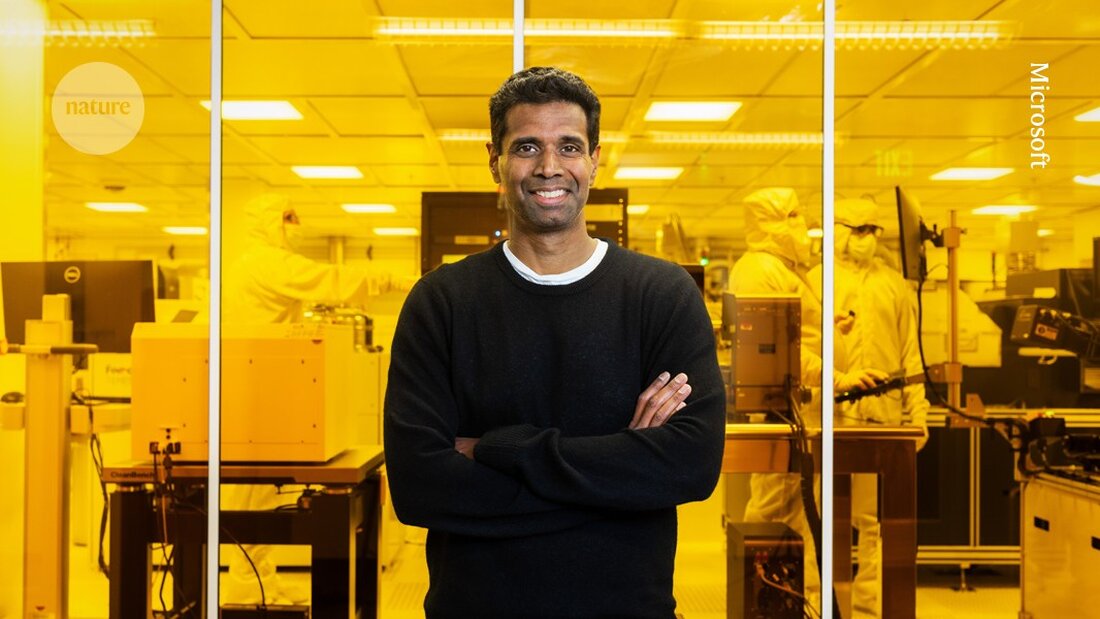Microsoft's claims about quantum computing technology: Physicists express doubts about the evidence
Microsoft presents results on topological qubits, physicists express doubts about the evidence of the claims at a conference in California.

Microsoft's claims about quantum computing technology: Physicists express doubts about the evidence
Anaheim, California
A Microsoft researcher today presented the results behind the controversial claim The company said last month it created the first “topological” qubits – a long-sought goal in quantum computing technology.
To a packed room during a meeting of the American Physical Society (APS), Chetan Nayak, a theoretical physicist who leads Microsoft's quantum computing project in Redmond, Washington, explained how the company is developing topological qubits that could be the building blocks for a noise-resistant quantum computer.
However, physicists in the audience expressed concerns about whether Microsoft actually made the first topological qubits. “It's a hard problem,” says Ali Yazdani, an experimental physicist at Princeton University in New Jersey. To anyone trying to develop topological qubits, he says, “Good luck.”
“It was a nice talk,” says Daniel Loss, a theorist at the University of Basel in Switzerland. But he expressed concerns about the strong claims and relative lack of evidence. "People have exaggerated and the community is unhappy. They have exaggerated," he says.
Nayak acknowledges the criticism: "I never felt like there would be a moment when everyone was completely convinced," he adds, emphasizing that Microsoft is confident in its understanding of the devices and that other researchers are enthusiastic about the work.
The much-anticipated APS presentation was hotly debated in physics circles. Microsoft announced on February 19 that it had created the first topological qubits. However, some physicists disagreed not sure if this claim would hold up, as there was no peer-reviewed scientific paper supporting this. (At the same time, Microsoft published a paper in Nature that described a method for reading future topological qubits rather than proving their existence 1 ).
Physicist Henry Legg of the University of St Andrews, UK, then cast further doubt on Microsoft's claim in a report on the preprint server arXiv, published ahead of peer review, by revealing weaknesses in a test the company uses to verify its quantum computing devices 2. Legg presented these results at the APS conference on Monday.
In his talk today, Nayak showed a schematic for Microsoft's qubits: They are microscopic, H-shaped aluminum wires mounted on indium arsenide, an ultracold-temperature superconductor. The devices are designed to exploit Majoranas, the previously unknown “quasiparticles” that are essential to the functioning of topological qubits. The goal is for the Majoranas to appear at the four tips of the H-shaped wire and emerge from the collective behavior of the electrons. These Majoranas could theoretically be used to perform quantum calculations that are resistant to information loss.
The new data Nayak presented consisted mostly of “X” and “Z” measurements of the qubits, which are vertical and horizontal probes along the H-shaped wire. When Nayak showed the data for the X measurement, he admitted that the characteristic bimodal signal was difficult to detect due to electrical interference.
Eun-Ah Kim, a theorist at Cornell University in Ithaca, New York, therefore questioned the robustness of the X measurement. “I would like to see bimodality easily detectable in future experiments,” she told the Nature news team.
-
Microsoft Azure Quantum. Nature 638, 651–655 (2025).
-
Legg, H.F. Preprint at arXiv https://doi.org/10.48550/arXiv.2502.19560 (2025).
-
Aghaee, M. et al. Phys. Rev. B 107, 245423 (2023).

 Suche
Suche
 Mein Konto
Mein Konto
